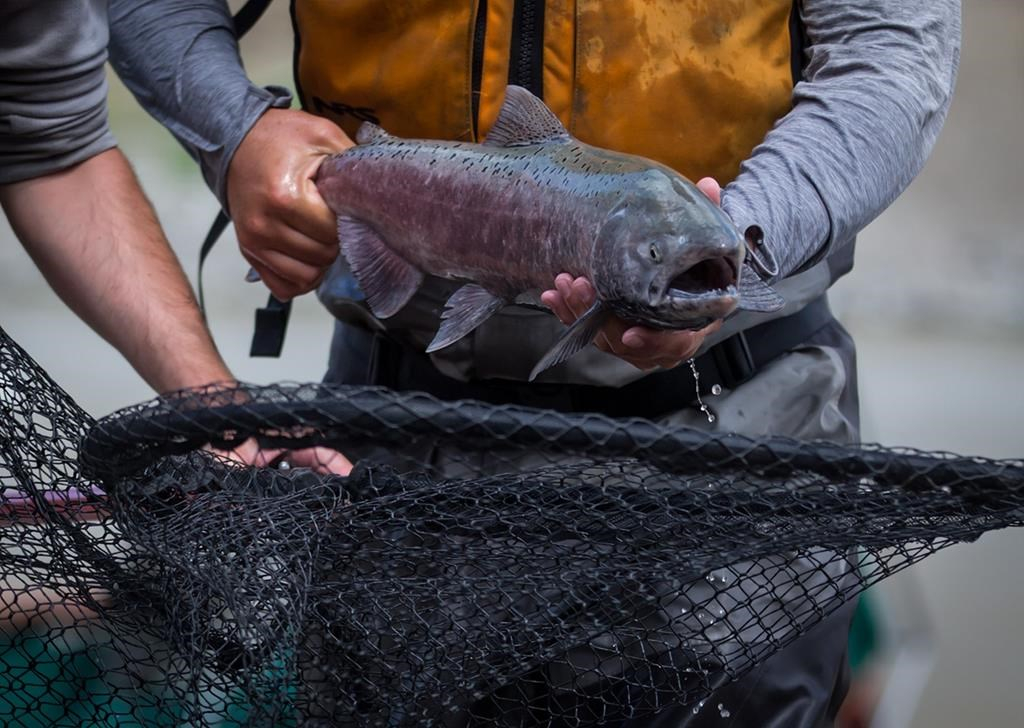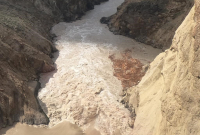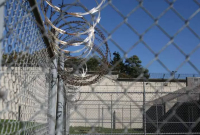Support strong Canadian climate journalism for 2025
Plans are underway for a pneumatic fish pump, also known as a salmon cannon, to be used to help fish migrate past a landslide on British Columbia's Fraser River, officials with the Department of Fisheries and Oceans said Monday.
A fish ladder is under construction that will direct salmon to a holding pool where they'll be pumped through a series of tubes suspended above the river, said Gwil Roberts, director of the department's landslide response team.
He said the pump is more viable in high water levels than a fishway that was completed by using boulders to create areas where the salmon can rest as they swim upstream to reach spawning areas.
Snowpack is melting fast and Roberts said the volume of water is concerning. The BC River Forecast Centre reports that the Fraser River at the area of the slide is already flowing at more than double the rate it was at the same time last year.
Roberts said migrating salmon won't be able to use the fishway until water volume drops, which may not happen until August.
The slide was discovered in the remote canyon north of Lillooet last June. Huge pieces of rock from a 125-metre cliff had sheared off and crashed into the river, creating a five-metre waterfall.
The salmon cannon, on lease from the Seattle-based company Whooshh Innovations, will help move the fish past the pinch point in the river. If for some reason it can't be used, salmon would be transported upstream as tens of thousands were last year by truck and helicopter, said Roberts.
Despite those efforts, Roberts said the slide was devastating and resulted in a "very high mortality rate" for wild salmon, whose populations are already in decline, threatened by climate change and habitat degradation.
Fisheries and Oceans expects hundreds of Chinook salmon to begin arriving at the site of the slide each day in late May, while thousands of Sockeye are expected to arrive daily starting in July.
Chinook is the primary prey of the endangered southern resident killer whales, and Michael Crowe, Fisheries and Oceans' manager of biological programs, said the fish that arrived early were the hardest hit by the slide last year.
It wasn't until early August that crews were able to catch fish in a healthier condition, said Crowe, and those fish generally fared better when it came to reaching their spawning areas. In early September, large numbers of fish could pass through the site on their own, he added.
Crowe said there has been extensive monitoring around the slide and spawning areas upstream, and that data will help Fisheries and Oceans draw conclusions about different populations and the impacts of last year's efforts to help the salmon.
While Roberts said the COVID-19 pandemic has not significantly delayed work at the site of the landslide, Crowe said it has affected scientists' ability to track how many salmon are heading out of fresh water and into the ocean this spring.
Roberts said a newly completed road has improved access to the slide, which is surrounded by steep terrain and hazards, and the primary contractor has implemented stringent safety measures to address risks posed both by the site and by the novel coronavirus.
This report by The Canadian Press was first published April 27, 2020.






Comments